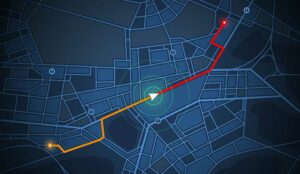Ian Campbell of Genesys shares four concepts for using customer analytics to make better use of your contact centre data.
Technology has a crucial role to play in creating seamless experiences between humans and machines, and in a more commercial sense, buyers and brands.
The likes of blended AI, chatbots, machine learning and more are providing customer service(CS) agents with more contextual information than ever before combining to enable swifter and smoother experiences for customers.
Many of the principles and technologies being applied to the CX journey have a significant use within the initial sales and marketing activities.
The more you know about prospects and their behavioural patterns, the better you can assist them during the buying cycle.
Thankfully for marketers, today’s digital-first consumers are generating vast amounts of information that can reveal the all-important insights that will shape the customer journey.
A typical buyer will interact with a brand or retailer in any number of ways before making their purchasing decision.
The more touchpoints and channels there are available to the prospect, the greater the complexity of a potential buying journey.
A timely intervention from a chatbot, a tailored promotion based on predicted actions or the offer of speaking with a customer service agent can all help in converting a prospect into a customer.
The technology for making use of this information and nurturing prospects along journeys is predictive analytics, and there are four key analytical concepts to consider in this realm:
- Collecting customer journey data
- Understanding journeys to personalize
- Anticipating journey outcomes
- Retuning using feedback
1. Collecting Customer Journey Data
From the traffic on their websites to the mentions they receive on social media, the clues are hidden in plain sight.
Collecting this valuable historic data is the first step towards better understanding the factors that will contribute to success or failure in the quest for new customers.
2. Understanding Journeys to Personalize
Applying analytics to the amassed information and making use of technologies such as machine learning can help you understand your customers and map out the different journeys.
Algorithms can be trained using journeys that resulted in certain outcomes and used to identify the critical moments and interactions that influence the different personas.
3. Anticipating Journey Outcomes
Segmenting personas enables the further personalization of experiences, and knowing the optimum intervention point can help you to pre-empt the needs of someone who is browsing your site or engaging on an automated channel.
4. Retuning User Feedback
In a rapidly innovating commercial landscape, customer behaviours are constantly changing as new technologies and capabilities come to market.
A continuous learning approach to customer journeys must be adopted, with refinements and optimizations made to processes and strategies.
To tie these four concepts together, you can use a connected platform that breaks down the silos between disparate data sources and customer channels, to turn insight into action.
Author: Robyn Coppell
Published On: 2nd Jan 2020 - Last modified: 7th Jan 2020
Read more about - Guest Blogs, Genesys


















